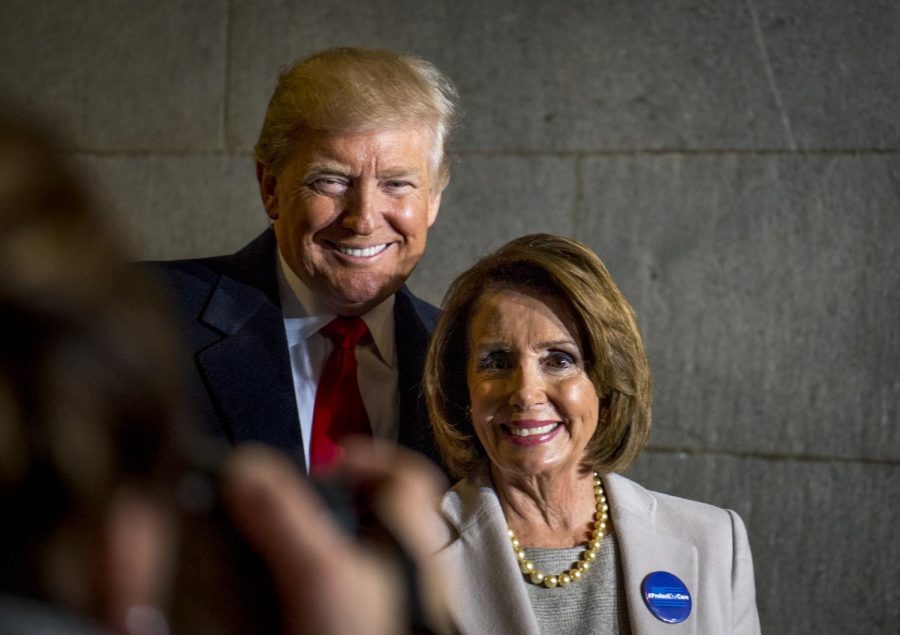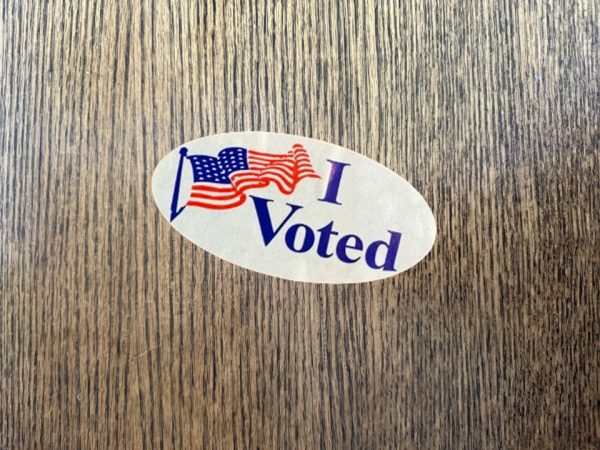Addressing a State of Disarray
President and Speaker of the House clash over State of the Union
February 4, 2019
Two heavy-hitters in politics have been in a face-off for the past month. President Donald Trump and Nancy Pelosi, the new Speaker of the House, openly opposed each other throughout the government shutdown. The biggest point of contention (other than the shut-down, itself) culminated in Pelosi’s opposition to Trump’s giving his State of the Union Address during the shut-down. Despite a temporary end to the shut-down, tensions are still high as both Pelosi and Trump prepare their respective parties to reach an agreement to permanently end the shut-down.
Originally, Pelosi invited the president to give his State of the Union Address on Jan. 29, to which he agreed on. This would be his State of the Union address in front of a Democratic House of Representatives. However, on Jan. 16, Pelosi rescinded her invitation for the State of the Union, citing security concerns and the government shutdown as reasons.
After defiance from the president, Pelosi solidified her decision on Jan. 23 by telling Trump that she would not allow him to address the House while the government was shutdown. At first, Trump scrambled and told reporters that he would give an alternative speech as a second option.
However, on Jan. 23, the president tweeted, “As the Shutdown was going on, Nancy Pelosi asked me to give the State of the Union Address. I agreed. She then changed her mind because of the Shutdown, suggesting a later date. This is her prerogative-I will do the Address when the Shutdown is over. I am not looking for an alternative venue for the SOTU Address because there is no venue that can compete with the history, tradition and importance of the House Chamber. I look forward to giving a ‘great’ State of the Union Address in the near future!”
In United States’ history, there has never been a speech for the State of the Union Address given during a government shut-down.
Article II, Section 3 of the Constitution reads, in reference to the President, “He shall from time to time give to the Congress Information of the State of the Union, and recommend to their Consideration such Measures as he shall judge necessary and expedient; he may, on extraordinary Occasions, convene both Houses, or either of them, and in Case of Disagreement between them, with Respect to the Time of Adjournment, he may adjourn them to such Time as he shall think proper; he shall receive Ambassadors and other public Ministers; he shall take Care that the Laws be faithfully executed, and shall Commission all the Officers of the United States.” With regards to the State of the Union, there is nothing in the Constitution stating that the State of the Union must be presented as a formal speech, or even given every year.
Pelosi noted, in her letter to Trump, that presidents in the 19th century issued their State of the Union in writing. It wasn’t until President Woodrow Wilson gave his State of the Union Speech in 1913, which was a revitalization of Presidents George Washington’s and John Adam’s practices.
After the government shutdown in 1995-1996, former President Bill Clinton said, “I challenge all of you in this Chamber: Never, ever shut the federal government down again.”
In retaliation, President Trump grounded the Air Force plane that Pelosi and other lawmakers planned to take to review wartime conditions in Afghanistan. After Pelosi and the lawmakers decided to fly commercial instead, the Trump administration denied them military support and instructed them to get permission from Mick Mulvaney, the acting White House Chief of Staff. Pelosi called this a “complete violation of separation of powers.”
Even as the government shut down is temprarily at an end, the country waits to see if Republicans or Democrats will act first, with Pelosi and Trump at helm.



























